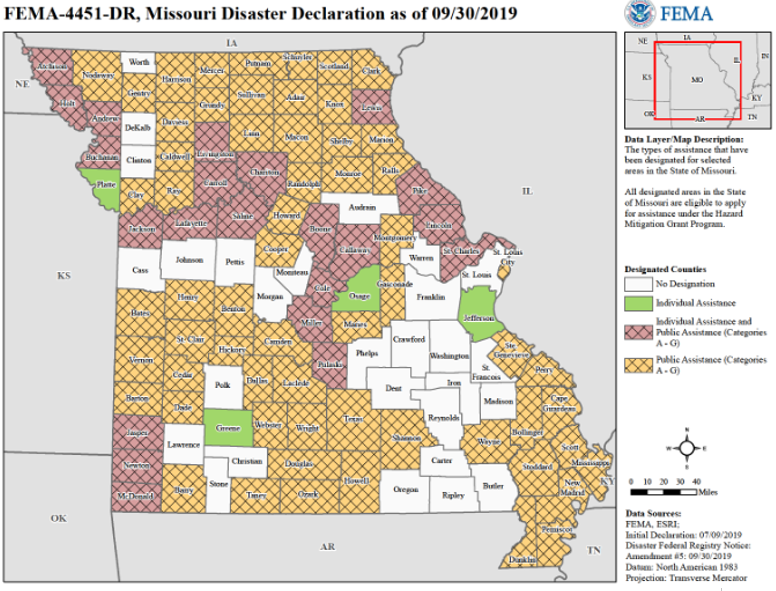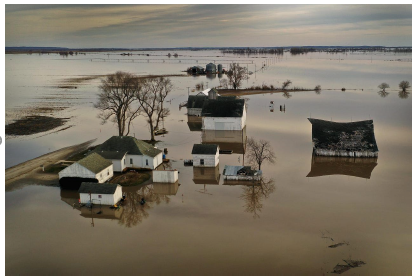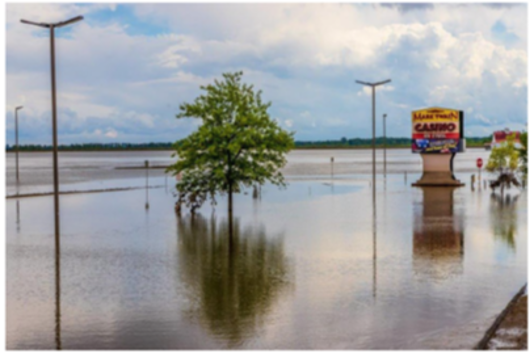U.S. Economic Development Administration Supports Disaster-Impacted Missouri Businesses and Communities in Times of Need
Missouri has a history of severe storms, including flooding, damaging wind events, winter storms, ice storms, droughts, and wildfires, and has been impacted by federally declared disasters more than 30 times from 1998-2018.
When natural disasters strike Missouri, all 114 counties depend on economic support to protect homes and businesses and the U.S. Economic Development Administration (EDA) has been there to help foster the economic recovery and resiliency process.
Under the National Disaster Recovery Framework (NDRF), a guide that enables effective recovery support to disaster-impacted States, Tribes, Territorial and local jurisdictions, EDA serves as the Coordinating Agency for the Economic Recovery Support Function (ERSF) (PDF) on behalf of the U.S. Department of Commerce (DOC).
Recognizing that the attraction of outside investment and the role of the private sector is critical and foundational in a community’s economic recovery, the ERSF facilitates the leveraging of federal resources, information, and leadership to help communities progress from direct federal financial assistance to community self-sustainment.
With 83 of the 114 counties in Missouri receiving a Major Disaster Declaration (DR-4451) in 2019 as a result of historic weather-related damage, EDA’s Denver Regional Office had near daily conversations with Economic Development Districts and local leaders to learn about how the events were affecting the local economy, infrastructure, and the workforce.

At the request of FEMA, EDA staff deployed to the FEMA Joint Field Office (JFO) in Jefferson City, in October 2019 to work alongside other federal and state agencies to help Missouri communities recover and become more resilient to future disasters. The EDA team is expected to remain in place until March 2020.

In particular, EDA worked closely with the Missouri Department of Economic Development (DED) to help economic and business activities return and develop new economic activities. While working with state and federal partners, the ERSF worked with DED to focus efforts on:
- Assessing economic impacts and damages to key economic sectors, including agriculture, transportation, and tourism, and
- Identifying potential recovery resources and assistance that could help regions and communities recover quickly.

Continued assessment of the economic conditions will support the ability of the state and local communities to define the challenges, identify resources to assist with addressing those challenges, and to prioritize actions that should be taken to restore local businesses and integrate economic resiliency measures into local economies. It is, however, local community leadership who directs the long-term economic recovery efforts.
Given the typical frequency of disasters, state agencies and many local communities in Missouri are experienced in response and intermediate recovery and they have developed a structure that mirrors the federal NDRF to help communities respond quickly and forcefully. The Missouri DED is leading this newly formed State Economic RSF.
“The knowledge, skills, money, technology, and advice that come out of our meetings enable a community to make solutions for themselves,” said Crystal Payton, FEMA external affairs officer for the two federal disasters declared in Missouri this year. “I’m especially proud of Missouri for being one of the first to mirror the federal disaster recovery coordination framework. They’ve displayed that typical ‘Show-Me State’ independence to own their recovery.”
In addition, in 2019, Missouri became one of the first states to hire a dedicated, full-time State Disaster Recovery Coordinator, Jessica Catron. Catron works jointly at Missouri’s State Emergency Management Agency and the DED, strengthening the long-term recovery partnership of the two agencies that manage the majority of disaster-related funds.
Post disaster, this added capacity can help the state tap into EDA’s Economic Adjustment Assistance (EAA) program, which can assist a wide variety of activities related to economic recovery and resiliency, including economic recovery strategic planning, Revolving Loan Fund capitalization to help provide businesses with gap financing, and construction assistance.
When an EF5 tornado hit Joplin in 2011, for example, EDA grants funded catalytic projects that were critical in the redevelopment of the 20th Street corridor and helping rebuild the Joplin school district’s Franklin Technology Center vocational school.
Jane Cage, of the Joplin Citizens Advisory Recovery Team, explained that rebuilding the 20th Street corridor provided the city with an opportunity to reimagine the space.
“We needed to create an anchor project to build around and that was relocating the library to 20th Street,” she said. “Once the new library was established, it was an instigator for other businesses to grow up around it—a bank, convenience store, apartments, and houses as well as an improved streetscape. It was a real opportunity to reimagine Joplin in a more modern way.”
She went on to say that the Franklin Technology School benefitted from EDA funds with equipment needed to train students for 21st Century jobs, which led the way to Joplin being named the first work-ready community in Missouri.
Although Joplin is still recovering eight years later, Cage said the community has rallied behind the efforts.
“We believe that every person it takes to build a community takes to rebuild a community,” Disaster Recovery Coordinator Catron said. “We bring in as many subject matter experts and stakeholders as possible to leverage resources. I’ve been told that the level of coordination we’ve achieved isn’t seen in other states.”
In FY 2018 and FY 2019, EDA received a total of $1.2 billion in supplemental disaster appropriations from Congress to help regions and communities recover from economic harm and distress resulting from natural disasters in 2017-2019. With these funds, which will be distributed through EDA’s EAA program via EDA’s six regional offices, communities and regions hit hard by major disasters in the United States are rebuilding stronger, more resilient economies.
EDA looks forward to continuing to work with Missouri communities to help them recover and build back stronger.
For more information on current disaster funding opportunities, including eligibility requirements, FAQ’s and how to apply, please visit EDA’s Disaster Supplemental Funding page.
Tags: Disaster








